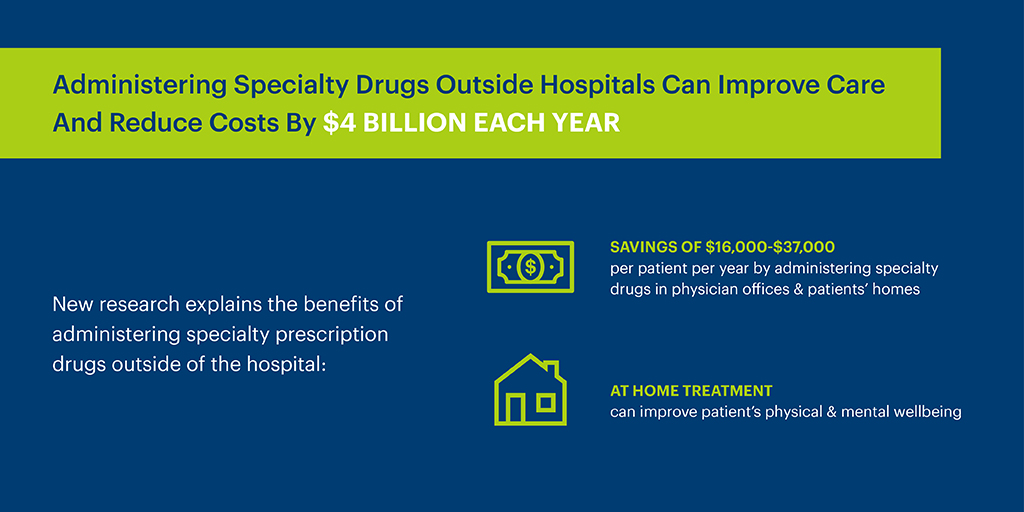Health care spending in the United States is expected to reach $6 trillion by 2027, according to the Centers for Medicare & Medicaid Services. However, UnitedHealth Group has conducted extensive research on the cost of care and has identified four areas where savings are achievable:
- Avoidable hospital emergency department (ED) visits
- Hospital prices
- Specialty Rx
- High-value physicians
This article focuses on specialty Rx.
What’s Behind High Specialty Drug Prices?
Since 2013, annual growth in per capita spending on administered specialty drugs has averaged 14%.
Compared to independent physician offices, hospitals charge more for specialty drugs and their administration, whether treatment occurs in a hospital or in a hospital-owned physician practice.
For several common administered specialty drugs, treatment at home can improve patients’ physical and mental well-being and reduce disruption of work schedules and family responsibilities, all without increasing the likelihood of adverse drug events or side effects.
The Savings Opportunity
Administering specialty drugs in physician offices and patients’ homes instead of hospital outpatient settings can improve care and reduce costs by $4 billion each year:
- It reduces costs by $16,000 to $37,000 per privately insured patient per year for five conditions that account for more than 75% of spending on administered drugs.
- It reflects a savings opportunity between 33% and 52%.
The Savings Opportunity by Condition
Administering specialty drugs in physician offices and patients’ homes instead of hospital outpatient settings offers the following savings opportunities per privately insured patient per year:
- Multiple Sclerosis: $37,000 savings for four months of treatment.
- Immune Deficiency: $32,000 savings for six months of treatment.
- Rheumatoid Arthritis: $28,000 savings for five months of treatment.
- Inflammatory Bowel Disease: $21,000 savings for five months of treatment.
- Cancer (Chemotherapy): $16,000 savings for four months of treatment.

Share This Story